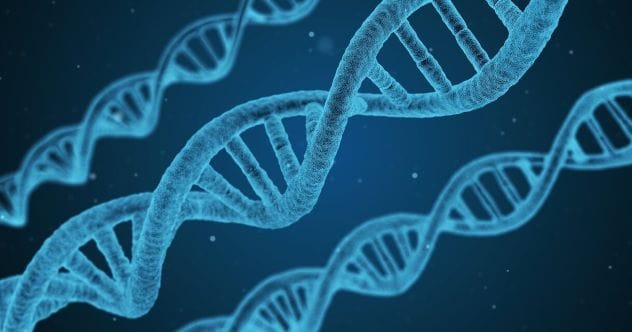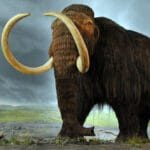The last decade has seen incredible advancements in DNA analysis, completely transforming our view of the human past. By teaming up with archaeologists, anthropologists, and language experts, scientists have unearthed some truly astonishing insights in just the last few years. These discoveries are changing the very story of our species. Let’s dive into ten of the most fascinating DNA research findings about our human past from 2020 and 2021.
10. Shared Ancestry: Native Americans and Australasians in Asia

For a long time, we believed early human migrations were straightforward. However, recent DNA discoveries paint a much more complex picture. We’re constantly learning new details about how and when people first reached the Americas. In 2021, a significant find in New Mexico—human footprints dated between 21,000 and 23,000 years ago—pushed back the timeline for the Americas’ colonization by thousands of years!
Analysis of DNA from native Australians has shown that a group, known as the Y population, shares some common ancestors with native people living in the Amazon today. Interestingly, this link isn’t found in Northern or Central American native populations. A 2021 study, using one of the most extensive South American DNA databases, tackled this puzzle. It revealed that the ancestors of South Americans and Australians met and interbred somewhere in East Asia. Later, some of their descendants entered the Americas and journeyed to the Amazon along the Pacific coast. This suggests humans may have entered the Americas from Asia at least two separate times.
9. Genetic Echoes: The Trans-Atlantic Slave Trade’s Lasting Impact
DNA analysis is also shedding light on one of the most tragic periods in recent human history. The Trans-Atlantic slave trade resulted in the forced migration of 12.5 million people over a few centuries—the largest in history. A new analysis using data from the 23&Me database helps us understand its profound genetic consequences.
The findings support historical records and underscore the brutality of the slave trade. For instance, people from regions like modern-day Senegal and Gambia were targeted by slave traders for centuries. Yet, their descendants are significantly under-represented in the USA today. This is likely due to the harsh conditions and high mortality rates on plantations. The study also shows geographical variations in how Africans mixed with other populations. African descendants in Latin America, where enslaved Africans often had children with native people, generally have fewer African ancestors than those in North America, where segregation was more pronounced.
8. Back to Africa: Neanderthal DNA’s Surprising Journey
The “out-of-Africa” theory is well-known: most non-Africans today descend from a small group that left the continent around 60,000–70,000 years ago. On their journey, these humans encountered and interbred with other groups like Neanderthals and Denisovans.
Because this mixing happened outside Africa, previous studies assumed Africans had no Neanderthal ancestry. Some geneticists even used African DNA as a baseline to measure Neanderthal or Denisovan ancestry in other populations. However, a groundbreaking study suggests that there were also migrations back into Africa. These returning groups brought Neanderthal genes with them, spreading them into the African gene pool through a process called gene flow.
This implies we might have overestimated Neanderthal ancestry diversity in non-African populations. Essentially, all humans might share a more similar amount of Neanderthal DNA than previously thought. This research complements 2021 archaeological findings in the Arabian Peninsula, showing significant movement across this region, facilitating the spread of genes and culture between the Middle East and Africa.
7. Ancient Roots: The World’s Oldest Family Tree Uncovered
The British Neolithic period is famed for its megaliths and communal burial sites, often containing many individuals. Until recently, the relationships between those buried together were unclear. Now, DNA analysis reveals these were likely family tombs. A study of 35 individuals buried in a long cairn in Hazleton, UK, showed they belonged to five generations of a single extended family. This allowed scientists to reconstruct the world’s oldest known family tree.
The family tree shows direct biological links between male members. One male skeleton appeared to be the father, grandfather, or great-grandfather to most others in the tomb. His children and grandchildren by two different women were buried with him. Interestingly, the two women and their respective children were buried in separate areas of the tomb, indicating that lineages were recognized even after generations.
Many female skeletons seemed to be from other areas, suggesting they joined the family through marriage and lived with their male partners. This points to a system called female exogamy, where women move to their partner’s community and family identity is passed down through the father—similar to how surnames are often inherited today. The burial also included individuals with no biological relation to the main family, leading researchers to believe that family bonds could also be formed through adoption, such as with step-children.
6. Farming a Language: How Asian Languages Spread
This study uniquely combines genetics with linguistics to trace the spread of language. Understanding how language families dispersed across the globe often involves complex and sometimes contradictory archaeological and historical evidence.
The Transeurasian language family, which includes languages like Japanese, Mongolian, and Turkish, spans the vast Asian continent. Scholars have long debated how these languages spread—whether by farmers, pastoralists, or Bronze Age migrations.
By integrating ancient DNA, linguistic analysis, and archaeological findings, scientists found a compelling solution. The study concluded that the Transeurasian language family originated with early millet farmers in northeast Asia. Its spread occurred in two main phases. The first involved a gradual expansion of these farmers into new territories, carrying their language with them. Later, Transeurasian people diversified into five “daughter groups” after the late Neolithic. They intermingled with other Eurasian peoples, exchanging partners, linguistic terms, and adopting new practices like wheat farming.
5. Polynesian Voyages: Unraveling Settlement Patterns
Much like the colonization of the Americas, the settlement of Polynesia has been a hot topic. This vast island region spans the world’s largest ocean, and its early inhabitants navigated it in open canoes. For years, scientists debated whether Polynesia was settled by people from South America, Australasia, or a combination of both.
A recent study analyzed the genomes of 430 modern individuals from 21 islands. The findings indicate that the settlement of Polynesia began around the 11th century, originating from Samoa. From there, people spread eastward, possibly colonizing islands that had only existed for a few hundred years. They eventually reached Easter Island (Rapa Nui) around the year 1200. These voyages were likely undertaken by small groups, fewer than 200 people at a time, navigating by the stars. They left behind the iconic moai statues that Easter Island is famous for today.
4. Denisovan DNA Hotspot: The Ayta Magbukon People
As these discoveries show, ancient DNA continuously reveals the complexity and surprising twists of ancient human migrations. The Denisovans, first identified from remains in a Siberian cave in 2010, have an intriguing genetic story. When their genome was compared with people alive today, it turned out they share the most common ancestry with populations in modern Southeast Asia!
Building on this, a recent study pinpointed a native group called the Ayta Magbukon, living in what is now the Northern Philippines, as having the highest percentage of Denisovan DNA—up to 5% of their genome! This leads scientists to conclude that Denisovans were present in the islands of Southeast Asia at least 50,000 years ago.
The Philippines is increasingly becoming a focal point for understanding early human diversity. In 2019, researchers announced the discovery of a new small-bodied hominin species, Homo luzonensis, which lived in the northern Philippines around 60,000 years ago. It appears Southeast Asia, including the Philippines, was a bustling hub of diverse human groups interacting and interbreeding long ago.
3. Ancient Battles: Humans Fought Coronaviruses 20,000 Years Ago
Did you think coronaviruses were a modern problem? Think again. Ancient viruses can leave genetic signatures in our DNA, which researchers can analyze. Scientists in one study found evidence that humans have been dealing with coronavirus variants since the Stone Age! Their research also supports previous findings suggesting that intermixing with Neanderthals may have made Europeans more susceptible to coronaviruses.
The earliest identified coronavirus epidemic emerged in East Asia approximately 20,000 years ago, or about 900 human generations back. This epidemic lasted for several generations, long enough to exert what scientists call a “selective pressure” on human populations. The initial strain was likely more dangerous than the modern Covid-19 variant, gradually becoming less deadly over time. While the researchers note this ancient exposure doesn’t seem to make modern East Asians more or less vulnerable to the current virus, the field of evolutionary medicine could still offer valuable insights for developing cures or combating future outbreaks.
2. Surprising Connections: First Europeans and Native Americans
By now, it’s clear that ancient DNA research often uncovers complicated human movements and yields some genuinely perplexing results. For instance, two recent papers analyzed the genomes of individuals who lived in Bacho Kiro cave in Bulgaria around 42,000–45,000 years ago. These skeletons represent the oldest Homo sapiens remains found in Europe.
Researchers discovered that these individuals had Neanderthal ancestors “just a few generations back,” indicating that interbreeding with our Neanderthal neighbors was likely quite common. When scientists compared the Bacho Kiro genomes with those of people alive today, they found a surprising connection: these ancient Europeans were more closely related to present-day Native Americans and East Asians than to modern Europeans. Furthermore, human remains from the same site but dating to a later Paleolithic period showed closer genetic ties to modern Europeans. This highlights the dynamic nature of ancient populations, constantly mixing and moving across landscapes.
1. Nit-Picking History: Future DNA Research from Head Lice!
This final discovery might not rewrite human history itself, but it’s a delightful and ingenious development for future research—almost like something out of Jurassic Park! It turns out that human DNA can be preserved in the cement-like substance that head lice use to glue their eggs (nits) to our hair.
The scientists pioneering this technique sampled hair from Argentinian mummies who died 1,500–2,000 years ago. Can you imagine meticulously combing through an ancient mummy’s hair for nits? Beyond being revolutionary (and perhaps a tad gross), this method could offer a more sustainable way to extract ancient human DNA. Current techniques often require destroying parts of bones or teeth, making archaeologists hesitant to use them on rare specimens. This nit-based approach could also provide a way to sample DNA from regions that are reluctant to allow the export of human remains for Western scientific analysis.
These ten discoveries are just a glimpse into the incredible potential of ancient DNA. As technology continues to advance, we can only imagine what further secrets about our shared human story will be unlocked from the genetic code of our ancestors.
What do you think is the most surprising DNA discovery? Share your thoughts and any other fascinating finds in the comments below!










